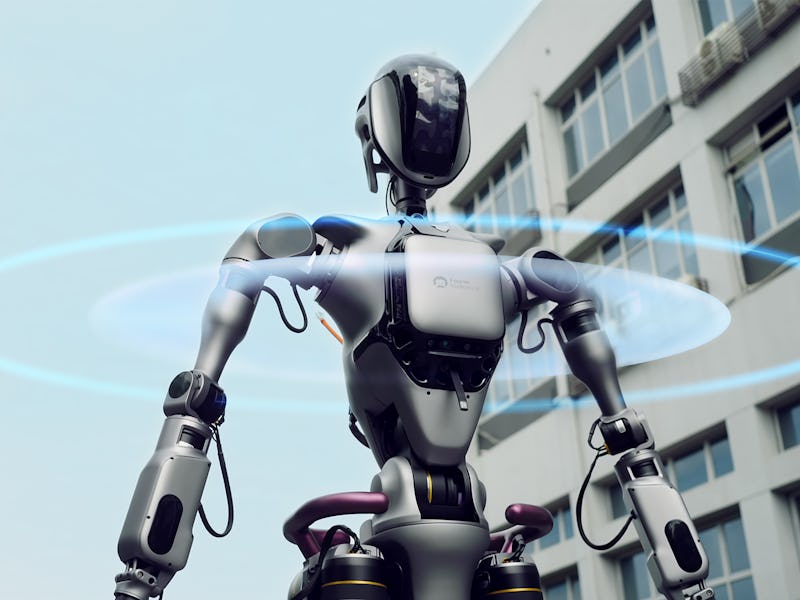This Humanoid Robot Borrows An Impressive Trick From Tesla’s Autopilot
The GR-1’s six cameras let it explore the world around it.

It may resemble a human, but Fourier Intelligence’s GR-1 robot has six eyes instead of two — the robotics company recently updated its humanoid robot with six cameras that give it a full 360-degree view around it.
Most other humanoid robots use a mix of cameras and sensors, including lidar, radar, and infrared, to understand their place in the surrounding environment. However, Fourier is going with a vision-only approach that relies on cameras and avoids all the other hardware.
It’s not the first time we’ve seen this; Tesla previously removed radar and ultrasonic sensors from its EVs in favor of a similar camera-based approach for its Autopilot system. This approach may even be what Tesla is doing with its Optimus bot, which uses the same system as its Full-Self Driving.
Improved Perception For Less Costs
As for the GR-1, the six cameras are placed strategically around the robot to give it a 360-degree view. Since it can see all around it, the cameras’ views can be combined to generate a bird’s eye view that helps the GR-1 map out where it is in relation to its surroundings. With the top-down look, Fourier’s robot can even generate a virtual environment with 3D models so it knows exactly how much space it has to avoid collisions.
With six cameras, the GR-1 can see everything around it.
Fourier claimed that the GR-1 was smart enough to detect cars and pedestrians on sidewalks during its outdoor walking tests. Besides its new vision-only system, Fourier infused the GR-1 with a “ChatGPT-like multimodal large language model” along with natural language processing and logical reasoning, similar to what we see in Figure 01. Roger Cai, director of robot application R&D at Fourier, said that the GR-1 could be used for medical rehab, family services, security, emergency rescue, or industrial manufacturing.
However, the GR-1’s vision-only system presents a major benefit. According to Fourier, this camera-only approach cuts down on hardware costs, while still improving the GR-1’s perception. Considering how most humanoid robots are rumored to cost the price of an entry-level car, this could be the defining factor of the GR-1 that helps make humanoid robots more mainstream.
Making Robots More Approachable
Fourier launched its GR-1 humanoid robot last year and the company had plans to produce 100 of the humanoid robots by the end of 2023, according to New Atlas. We’ve yet to see the GR-1 in any commercial use, but Fourier’s latest vision-only update could convince more companies to employ it for the use cases that Cai detailed.
While Fourier hasn’t provided the starting price of its GR-1 robot, this swap to a vision-only system should drop the overall costs and offer a more reasonable price tag for companies or households. Even though many humanoid robot options are coming to market, the GR-1’s design could offer a solution to making them more affordable and accessible.